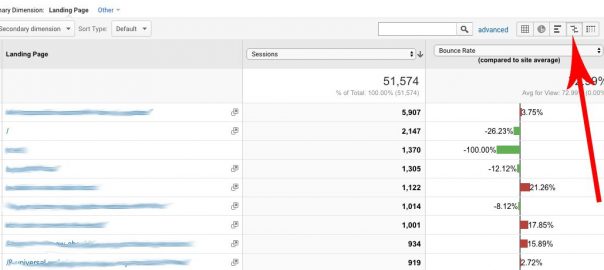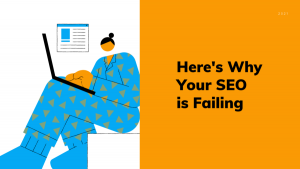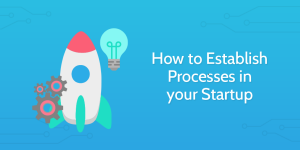When creating landing pages, marketers tend to focus all their efforts on optimizing page elements — making sure the headline engages the visitor, testimonials speak to your unique value proposition, the lead capture form is correctly formatted, and the CTA button jumps off the page.
That’s all marketers need to generate high quality leads, right?
Then why is it that professional landing pages — getting decent traffic numbers — don’t produce conversions a lot of the time?
It’s because marketers forget about the visitor in the conversion equation.
Remember the Other Side of the Conversion Equation
Persuading landing page visitors to convert doesn’t only depend on the offer and page elements; it’s also contingent on the visitor.
It wouldn’t matter if your landing page elements are optimized perfectly, and the page is receiving steady traffic. If the visitor has no interest in the offer, or if you’re not targeting them at their current place in the funnel – they won’t convert no matter how persuasive the page is.
To fulfill your conversion goals, the most appropriate prospects should see your offer.
If your conversion rates are suffering, don’t immediately conclude that you need to tweak your page elements through A/B testing. First investigate whether there’s something wrong further up the funnel.
So how do you determine if your page is a victim of mismatched traffic? The answer lies in your data.
How to Determine if Your Landing Page is Getting Mismatched Traffic
If there’s a significant gap between the number of page visits and the number of conversions, there is clearly a disconnect.
Looking at the bounce rate can tell you whether or not the page is fulfilling your visitors’ expectation. A high bounce rate shows you either your page elements aren’t optimized or there’s a mismatch between your page and traffic sources.
Don’t worry about what you think is a good conversion rate, or what you think is a good bounce rate. Instead, open up Google Analytics and go to Behavior > Site Content > Landing Pages and use the comparison feature to analyze which landing pages are performing well in comparison to your other pages.

For pages that have a lower conversion rate than average, analyze your traffic sources because your pages could be suffering from mismatched traffic, which could be because of one or both of the following reasons:
- Persona Conundrum — The visitor coming to the page has nothing in common with your targeted buyer persona.
- Mismatch Conundrum — There is a message mismatch in the pre-click experience, bringing the wrong visitors to your page.
Let’s analyze both of these conundrums separately and discuss how you can avoid them.
The Buyer Persona Conundrum
Buyer personas are a research-based model that attempts to represent to a degree of accuracy how your customer buys, thinks, behaves, etc.
You generally use this either to match your marketing communications and messaging strategy with what aligns to your customer profile, or to fuel product design and development decisions.
Depending on your current stage in the customer research process, your buyer persona knowledge can vary from a few scribbled notes about your target customers’ desires to complete persona cards built with quantitative and qualitative data from a large sample size:

Landing pages should be designed with your target audience in mind. The point of buyer personas is to have an evidence-based guideline to help you build experiences that cater towards your idea customer profile. It doesn’t take the place of testing, but it’s a good starting point for your marketing.
Now imagine a prospect who doesn’t fit your buyer persona arriving at your page — the page elements won’t make sense to them. The offer would be useless to them and exiting the page without converting is the only logical action. For example, a user looking to book a hotel for a big family reunion might click an ad for a bed and breakfast, but they won’t click the call to action button because the offer of a small room at the bed and breakfast is not something they’re looking for.

Translation: the wrong traffic is coming to your page. It doesn’t matter how optimized your CTA is in this case.
This is the time to see if visitors coming to your page reflect your ideal customer profile, because chances are, the assumptions you’re making about your page traffic are wrong. Because the bottom line is, if you’re like most marketers you’re getting the wrong landing page traffic, your best opportunity to increase your conversion rate is to improve the quality of your traffic.
After conducting more than 2,000 AdWords audits, Disruptive Advertising found that only 12% of their PPC keywords produce 100% conversions. What’s even worse is the fact that 88% of keywords accounted for 61% of ad spend — on the wrong traffic.
Let’s see how the wrong traffic can negatively affect your bounce rate and conversion rate simultaneously, highlighted by Disruptive Advertising.
A while back, the agency promoted their Valentine’s Day-themed blog post on Facebook:

Although the agency had completed in-depth research on their target audience; when they promoted the post on Facebook their conversion rate went down, despite generating quite a few clicks.
Upon further investigation into the audience insights, Disruptive Advertising found that most of their traffic consisted of 55+-year-old women:

Turns out, Facebook users were clicking the ad because of the ‘Spice Up Your Love Life’ angle. But because they weren’t the agency’s target audience — the ad failed to convert a single person.
While setting up your AdWords campaigns, it’s important that you only include keywords that resonate with your buyer personas and match user intent. Ranking highly for the wrong keywords will inevitably bring the wrong traffic.
Not only does this apply to your paid and targeted ads, but it also applies to your coveted SEO traffic. Attract the wrong audience, and it’s a vanity metric, but worse, because it paints a false image of success.
That’s essentially what Amy Wilson wrote about what happened with BuiltVisible. They saw a disturbing trend in their traffic data:

This wasn’t actually bad news for BuiltVisible, though. As Amy wrote:
 Amy Wilson:
Amy Wilson:
“In reality, this decline in traffic was a good thing. It represented a sloughing off of distracting content; a refocus; a new beginning. The robust headline traffic stats had been masking the real numbers we should have been paying attention to all along.
Let’s back up a bit and explain ourselves. As part of our agency rebrand, we carried out an in-depth, data-led content review that revealed some harsh truths about our digital estate.
The content audit – carried out to identify which pages were most popular and relevant to our core audience – revealed that a single page was attracting over 20% of our traffic. “How to fix your iPhone screen” was a hugely popular resource for many people… yet had nothing to do with what we do or who we are. There were a small number of similar blog posts that were also very popular and represented the majority of our organic search traffic.”
Choose Appropriate Acquisition Channels and Tactics
Choose the most appropriate promotion channels based on your ideal customer.
For example, it wouldn’t make much sense to promote your landing page on Pinterest if your buyer persona is a 50-60-year-old male. That’s because 85% of Pinterest users are female, and 40% of the social network’s users are between 18-24 years old.
One way to attract the right audience is to promote your relevant landing page at the end of any related blog post. This can be effective because if readers make it to the end of the article, and click your CTA button, they’re highly engaged with your content and interested in your offer. At Instapage, we do this with most articles:

Another way to generate the right traffic is to include a landing page link in your email. If recipients click through, you’ll know they’re interested and your chance of conversions increases.
The Message Mismatch Conundrum
Message match is the process of matching the content of an ad to the content of a landing page so that the message is reinforced in the mind of the prospect, and they know it’s relevant. When your ad and landing page don’t match up, your bounce rates are bound to increase because the visitor doesn’t find what they came looking for on your page.
For example, if your ad promotes a free trial for a heat mapping service, your landing page should promote the same offer. If it doesn’t, the visitor is sure to exit the page because you didn’t continue offering what was promised in the ad.
Imagine you’re interested in adopting a cat and you do a quick Google search. This is the top ad you see:

The ad’s headline assures you that you’re just a step away from adopting a cat — so you click the ad — and this is the landing page you arrive at:

The first thing you see is a dog – not a cat — message mismatch. Granted, you can select pet type from the first dropdown, but you can’t expect the majority of visitors to complete these three fields to get what they want. Even as you scroll down, dogs dominate the page:

The paid search ad was a bit misleading because it specifically talked about adopting cats, but directed you to a page heavily favoring dogs over other pets. This kind of message mismatch will cause potential visitors to exit the page before converting.
To maintain message match between your ad and landing page, make sure that both tell the same story and get advertised for the right keywords.
In contrast to the AllPaws example, Tableau demonstrates how to perfectly message match an ad and landing page. Both the ad and the page promote a free whitepaper with the same headline and design.
Here’s the ad:

And, here’s the landing page:

Anyone intrigued by the ad enough to click will likely convert on the landing page. That’s because both tell the same story and the landing page continues the promise in the ad — the free whitepaper.
Create Ad Groups
The most optimal situation is to create single keyword ad groups (SKAGs). That way, you can guarantee message match from ad to landing page. Many companies can’t afford to do that because they have many similar keywords they want to message match while still ranking highly.
If your paid search campaigns require many keywords to rank, a good way to accomplish this, is to create ad groups with five to twenty related keywords, each ad group should be built around granular thematic keywords. Breaking up your ad groups with more focused keywords allows you to message match ads and landing pages. Any more than Google’s recommendation and you risk facing the message match problem discussed above.
Another thing to consider with keyword selection is user intent. Think about the intent of the keywords before you create your ad and landing page around it. There are three main types of intent:
- Navigational: The user is trying to navigate to a particular web page
- Informational: The user is searching for information
- Transactional: The user is on the lookout to buy something or perform a certain online activity
For your ads and landing pages to have perfect message match, group keywords and create corresponding landing pages based on the three types of user intent.
Cross functionality between marketing departments such as paid, email, and analytics is extremely important to ensure that your agency isn’t plagued by the message mismatch and buyer persona conundrum. Take the time to create data-driven buyer persona profiles, and refer to them whenever starting a new campaign.
Also, test and optimize often because optimization, both on the traffic acquisition and landing page side, is never done.
Conclusion
Landing page optimization isn’t just about the elements
To generate maximum conversions, you need to look beyond the page elements themselves. Of course you need traffic for conversions, but simply getting a ton of prospects to view your landing page won’t guarantee more success.
Not all landing page traffic is good traffic. What you need is the right traffic.
Avoid high bounce rates and low conversion rates by digging into your analytics to fix any traffic mismatch problems you have. Once you’ve identified the weak links, you can promote your offers in the right channels where your targeted audience lives. Only then can you realistically expect prospects to convert on your offers and nurture them to sale.
Digital & Social Articles on Business 2 Community(50)






